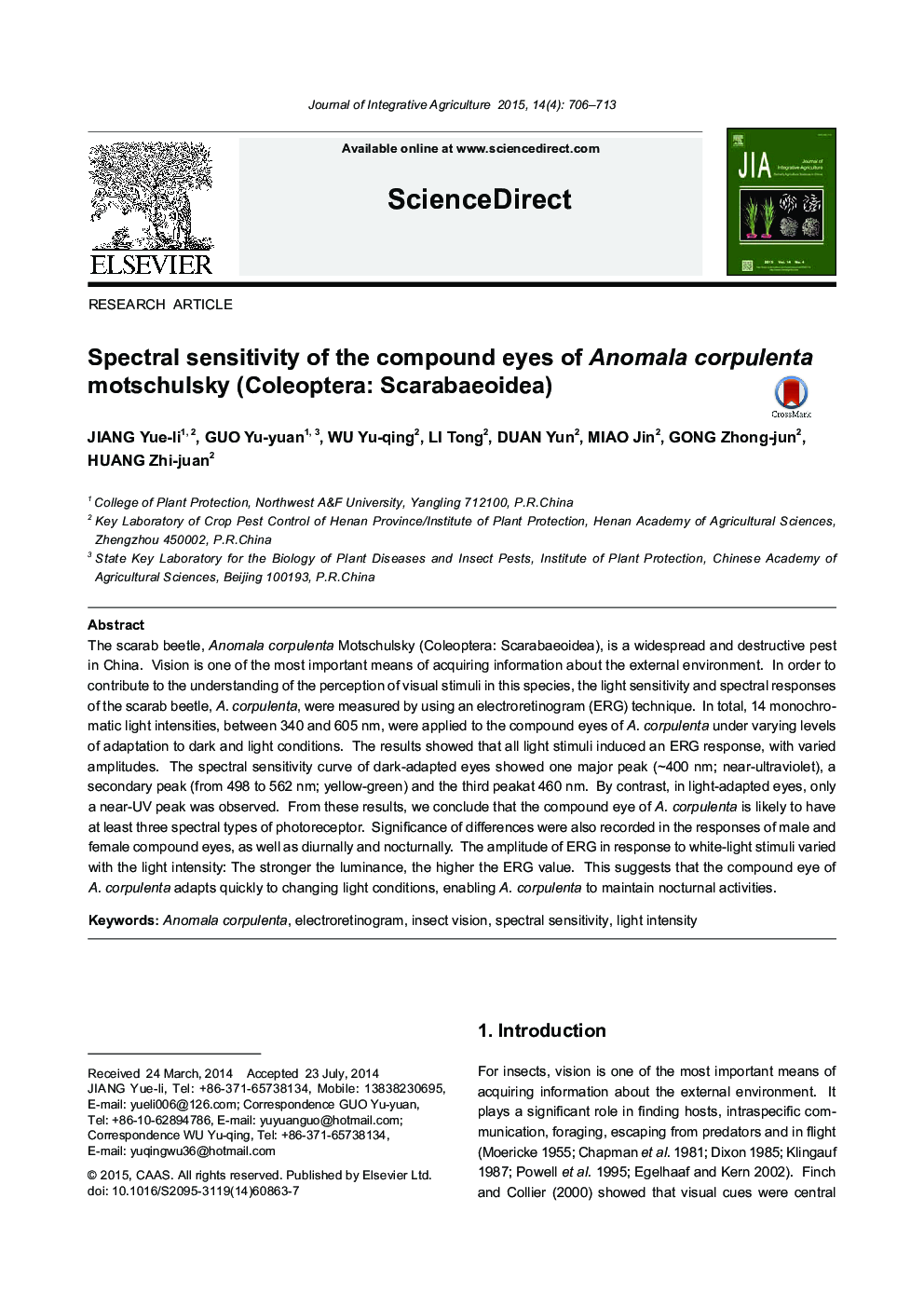| Article ID | Journal | Published Year | Pages | File Type |
|---|---|---|---|---|
| 4494361 | Journal of Integrative Agriculture | 2015 | 8 Pages |
The scarab beetle, Anomala corpulenta Motschulsky (Coleoptera: Scarabaeoidea), is a widespread and destructive pest in China. Vision is one of the most important means of acquiring information about the external environment. In order to contribute to the understanding of the perception of visual stimuli in this species, the light sensitivity and spectral responses of the scarab beetle, A. corpulenta, were measured by using an electroretinogram (ERG) technique. In total, 14 monochromatic light intensities, between 340 and 605 nm, were applied to the compound eyes of A. corpulenta under varying levels of adaptation to dark and light conditions. The results showed that all light stimuli induced an ERG response, with varied amplitudes. The spectral sensitivity curve of dark-adapted eyes showed one major peak (~400 nm; near-ultraviolet), a secondary peak (from 498 to 562 nm; yellow-green) and the third peakat 460 nm. By contrast, in light-adapted eyes, only a near-UV peak was observed. From these results, we conclude that the compound eye of A. corpulenta is likely to have at least three spectral types of photoreceptor. Significance of differences were also recorded in the responses of male and female compound eyes, as well as diurnally and nocturnally. The amplitude of ERG in response to white-light stimuli varied with the light intensity: The stronger the luminance, the higher the ERG value. This suggests that the compound eye of A. corpulenta adapts quickly to changing light conditions, enabling A. corpulenta to maintain nocturnal activities.
